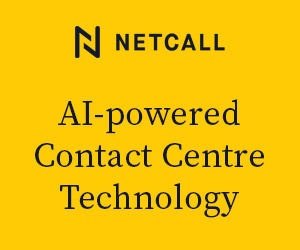Centrical dives into practical AI use cases you can implement now to drive immediate value for your organization.
Gartner predicts a massive shift by 2025, with 80% of customer service-focused organizations leveraging generative AI to enhance frontline productivity and the customer experience. But what if you could leapfrog the competition and reap the benefits today?
1. Increase Frontline Employee Productivity With AI Gamification
Like AI, gamification isn’t new – but is having “a moment” as an increasingly popular enterprise employee engagement strategy. This is for good reason, as it has proven extremely effective.
Applying game mechanics (such as badges, leaderboards, points, etc.) to non-game contexts, gamification taps into intrinsic and extrinsic motivators to align and inspire frontline employees to meet their targets and develop their skills, leading to improved productivity, increased employee retention, and improved customer experiences.
The emergence of gamification AI has taken it to a whole new level.
Gamification AI is gamification with integrated artificial intelligence technologies that boost employee productivity by creating a more dynamic, personalized, and engaging user experience.
Real-time feedback and adaptive learning are two areas that make AI gamification more powerful than its predecessor.
When users interact with the platform, AI can analyze their performance and behavior, including identifying where the user is struggling or doing well.
Based on this information, the system can adjust the difficulty of challenges, provide targeted hints, or suggest new learning pathways. As users improve, they are rewarded and recognized for their efforts.
Below are a few recommendations to get started with AI gamification:
- Define your objectives. These can include boosting employee engagement & reducing attrition rates, improving productivity, improving coaching consistency, and/or building a learning culture.
- Select the right platform that provides the features your organization needs while aligning with your business objectives.
- Design a robust strategy that leverages AI-powered personalization and adaptive learning and coaching.
- Regularly analyze data and feedback to optimize your strategy and, ultimately, your results.
2. Improve Knowledge With Personalized Training
Like gamification, training initiatives are having their own “moment” as an AI-bolstered enterprise practice. As organizations look to offer more effective and personalized learning experiences, AI-powered microlearning has emerged.
Personalized microlearning has increasingly been implemented in training and development programs to supplement traditional methods (e.g., instructor-led training (ILT), long-form documentation, longer online modules, etc.).
Microlearning fights the forgetting curve by reinforcing new knowledge via bite-sized learning modules and reduces non-productive time by enabling agents to engage with training content within the flow of work.
AI enhances the frontline employee learning experience, making it more efficient and tailored to that individual.
Through AI-powered personalization and automation, new learning materials are triggered and sent based on individual performance and knowledge gaps, ensuring that content is timely, relevant, and tailored to every employee’s unique needs.
When learning is both gamified and personalized, learners are much more motivated and engaged, with benefits including:
- Higher levels of confidence
- Faster time to proficiency for new hires
- Efficient and effective upskilling/cross-skilling
- Higher productivity
- Reduced attrition
- Ultimately, a better customer experience
3. Scale Content Creation With Generative AI
The first step toward a successful AI-powered training program? Creating fresh, relevant content for learning initiatives and employee communications, including:
- Onboarding training
- Upskilling and cross-skilling
- Regulatory updates
- New company policies and processes
- Product and service launches
- BPO client information and process updates
However, managing this level of content requires bandwidth and agility. When demand is high and bandwidth is low, communication and execution are delayed, which impacts frontline employee proficiency and customer experience.
It’s a vicious cycle. But it doesn’t have to be.
By leveraging generative AI, learning and development (L&D) teams can easily create microlearning content, best practices guides, simulations and knowledge check quizzes in a matter of minutes.
And it’s not limited to L&D teams. Generative AI technologies democratize content creation, enabling anyone in the organization to create content quickly.
For instance, if a frontline manager notices that his team has been scoring low on quality in a specific area or a sales leader identifies a gap in product knowledge, they can quickly create a learning module to course correct.
While generative AI will not reduce the amount of content needed, it will certainly reduce the time needed to create it!
4. Reduce Manager Burnout With AI Coaching
Frontline managers have a tough job. In addition to managing, coaching, and developing their teams, they spend an inordinate amount of time on administrative tasks like preparing for meetings, reviewing individual rep performance data, developing training materials, and other responsibilities – all of which take time away from providing direct feedback and support to their team members.
This all results in less time for meaningful, face-to-face discussions and “in-the-moment” development conversations, making coaching less impactful and creating higher risk of manager burnout.
AI can elevate the manager experience and free bandwidth to enable a more meaningful and impactful, human-centered approach by offering managers:
- A 360-degree view of employee and team performance
- Help in prioritizing coaching and recognition by identifying outliers
- Comprehensive insights for each team member with AI-generated, personalized next best action recommendations
- Auto-identification of root causes behind performance issues
- A smoother, more efficient, and streamlined workflow
With the help of AI technologies, frontline managers have more bandwidth to focus on other areas of their role, such as strategic initiatives.
Just as importantly, managers also have more time to take a people-centered approach to build trust, camaraderie, and collaborative relationships with their teams.
Finally, like their direct reports, managers need an engaging and personalized experience of their own. AI-driven strategies around performance gamification, training, and development keep frontline managers motivated and empowered to develop and perform at their best.
5. Improve Quality Monitoring With Automation
Quality management processes often rely on humans performing manual tasks; as such, they are typically cumbersome, inefficient, inconsistent, and hard to scale. These processes also require ongoing calibration, which adds to the inefficiencies.
While some tasks have been automated in recent years, quality management is still catching up to other areas of the organization when it comes to smooth, efficient, and optimal processes.
But AI has changed the game by automating and simplifying processes, enabling leaders to uncover deeper insights into performance, drive supervisor efficiency in addressing quality issues, and ultimately elevate the overall quality of customer interactions.
Below Is a Breakdown of How AI Makes This Possible:
- AI copilots can quickly scan vast repositories of interaction data.
- The AI can glean actionable insights from this data, such as agent behaviors, language proficiency, empathy levels, etc.
- AI also identifies and scores key behaviors, skills, and competencies impacting performance.
- Based on these findings, the copilot suggests actionable feedback, targeted learning, practice simulations, and other next-best actions.
- The manager now has a nuanced understanding of performance trends, strengths, and areas for improvement at the team and individual levels.
A wave of innovation is sweeping contact centres. Adopting AI technologies and modernizing operations to meet changing customer expectations is critical to maintaining customer loyalty and staying ahead of the competition.
This blog post has been re-published by kind permission of Centrical – View the Original Article
For more information about Centrical - visit the Centrical Website
Call Centre Helper is not responsible for the content of these guest blog posts. The opinions expressed in this article are those of the author, and do not necessarily reflect those of Call Centre Helper.
Author: Centrical
Published On: 2nd Jul 2024 - Last modified: 22nd Oct 2024
Read more about - Guest Blogs, Centrical






 Centrical provides a real-time performance management, microlearning, gamification, coaching, and voice of the employee platform for frontline teams. The solution inspires and personally guides employee success and growth by making every moment actionable.
Centrical provides a real-time performance management, microlearning, gamification, coaching, and voice of the employee platform for frontline teams. The solution inspires and personally guides employee success and growth by making every moment actionable. 




























